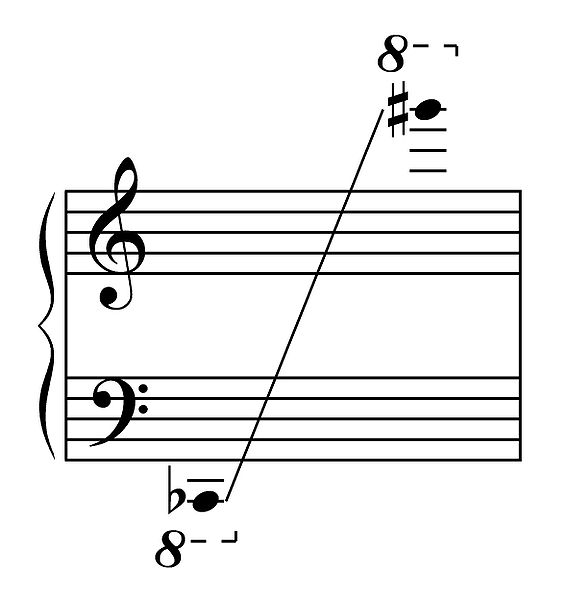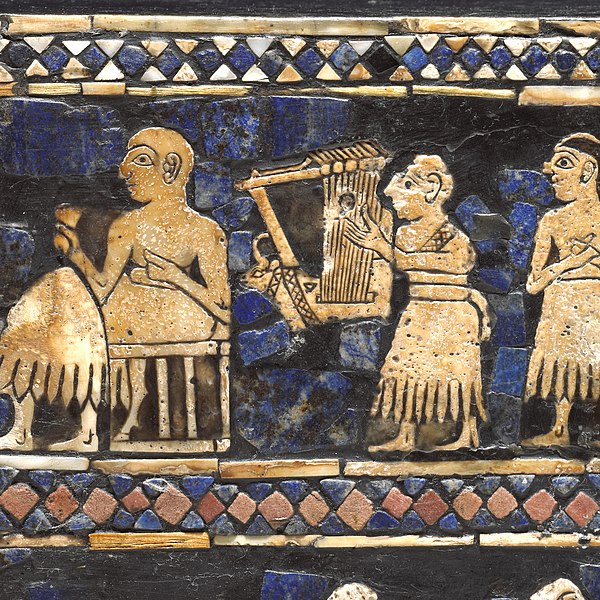Angular harp is a category of musical instruments in the Hornbostel-Sachs system of musical instrument classification. It describes a harp in which "the neck makes a sharp angle with the resonator," the two arms forming an "open" harp. The harp stands in contrast to the arched harp or bow harp in which the angle is much less sharp and in which the neck curves away from the resonator. It also stands in contrast to the frame harp which is a "closed harp" and in which there is no opening between the resonator and the upper tip of the harp, but has a third side forming a triangle.
Egyptian angular harp (10th–8th century B.C.) Found at Thebes. The instrument has a pine wood mast (vertical bar under the green skin that the strings are tied to). The vertical wood box is made of sycamore and covered with skin, with a skin soundboard. The horizontal tailpiece is made of cedar. The strings are modern.
In this Konghou vertical harp, the body curves forward. The body also extends downward below the soundbox, and the neck (horizontal) connects there.
Assyrian horizontal harp with beater rod. In other images the rod is used as a pick.
Elamite vertical harps
The harp is a stringed musical instrument that has individual strings running at an angle to its soundboard; the strings are plucked with the fingers. Harps can be made and played in various ways, standing or sitting, and in orchestras or concerts. Its most common form is triangular in shape and made of wood. Some have multiple rows of strings and pedal attachments.
Harp
The Harps of Chogha Mish Iran are considered to be the world's oldest surviving stringed instruments, 3300-3100 B.C.E
The Queen's gold lyre from the Royal Cemetery at Ur; Iraq Museum, Baghdad
Lyres of Ur








